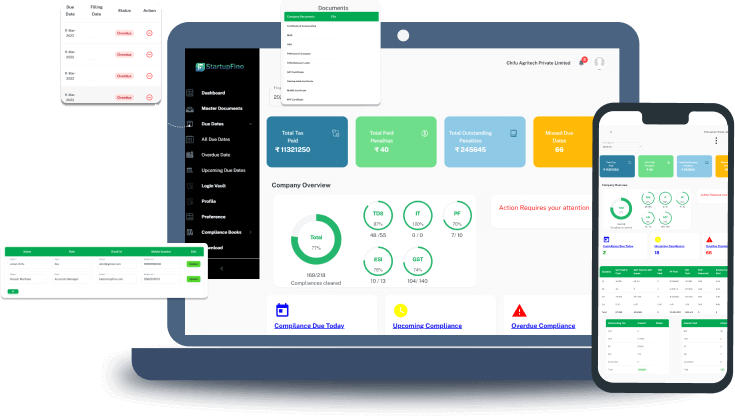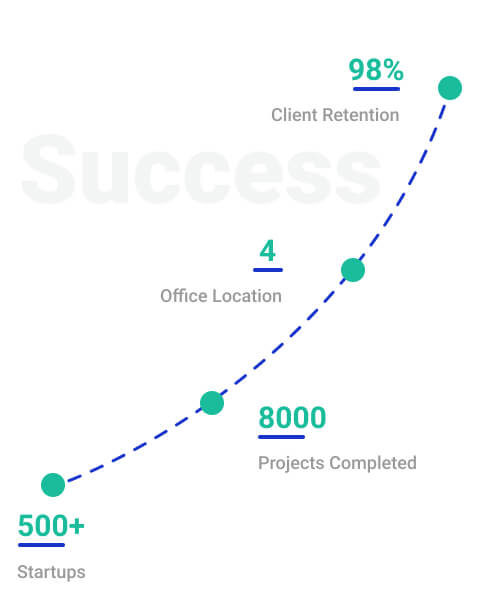Steps to create Startup Financial Model
There are few simple steps that is required to be followed for developing financial modeling for startups as discussed below:
Gather Data and Information
Firstly collect all the relevant financial and non-financial information about the startup. This includes historical transaction records, financial statements, market research, industry benchmarks, and any other data necessary to understand the business and its operations.
Define the Model's Purpose
Clarify about the objectives and scope of the startup financial model. Determine the specific questions or scenarios of the model such as funding requirements, revenue projections, or valuation analysis. This will help guide the structure and focus of the financial model.
Use the Model for Decision Making
Utilize the financial model as a tool for decision making. It is for assessing the impact of strategic choices, evaluating different scenarios, and making informed decisions about the startup's operations, growth strategies and financing needs. The regular review and update of the model helps to align the evolving needs of a startup.
Identify Key Assumptions
Identify the critical assumptions that will drive the financial model. These may include factors such as revenue growth rates, customer acquisition costs, pricing strategy, gross margin, churn rates, and operating expenses. Based on these assumptions on market research, industry benchmarks, a deep understanding about startup is gained in specific circumstances.
Build a Revenue Model
Create a revenue model which estimates the startup's sales or revenue streams. Consider different revenue sources, potential customer segments and pricing tiers. Determine the revenue growth and develop formulas or calculations to project future revenue based on the identified assumptions.
Project Expenses
Estimate the startup's variable costs such as cost of goods sold, marketing expenses etc and operating expenses, including fixed costs such as utilities, rent, salaries, etc. Break down expenses into relevant categories and develop formulas or calculations to project future expenses based on the identified assumptions.
Create a Profit and Loss Statement
Create a profit and loss (P&L) statement which summarizes the startup's expenses, revenue, and profitability over a specific period, mainly on a monthly or yearly basis. Ensure that all revenue and expense items are accurately captured in the P&L statement, including taxes, depreciation, and interest expenses.
Develop a Cash Flow Projection
Construct a cash flow projection which determines the expenses and revenue forecasts. This projection must include cash inflows from revenue, financing activities, investments as well as cash outflows for expenses, debt repayments and capital expenditures. Consider the timing of cash flows and account for any cash flow gaps that may arise.
Develop a Balance Sheet
Make a balance sheet that reflects the startup's liabilities, assets and shareholders' equity. It must include both current and long-term assets, liabilities, such as accounts receivable, cash, inventory, debt, and equity. Ensure that the balance sheet remains in balance by accounting for further changes in assets and liabilities over a period of time.
Conduct Sensitivity Analysis
Perform sensitivity analysis by adjusting key variables and assumptions in order to understand the impact on the financial model. Test different scenarios and assess how changes in revenue, expenses, or other variables affect the startup's financial performance and cash flow. This analysis helps identify the most critical drivers and risks.
Document Assumptions and Methodology
Clearly document the assumptions, calculations, and methodologies used in the financial model. This documentation ensures transparency, allows for easy updates, and enables others to understand and use the model effectively.
Validate and Refine
Continuously validate and refine the financial model by comparing the projections to real-world data and adjusting the assumptions as needed. Incorporate actual financial results into the model and assess the accuracy of the projections. Regularly update the financial model to reflect new information or changes in the startup's circumstances.
Assumptions used in Financial Model
The following assumptions used in the financial modeling for startups are as follows:
Revenue Growth Rate
Assumptions about the rate of revenue growth are for projecting future sales. This is based upon industry trends, market research, historical performance, or the startup's growth strategy. It is important to consider factors like market share, customer acquisition, pricing strategy, and potential expansion into new markets.
Pricing Assumptions
The pricing assumptions help in determining the price at which the startup's products or services will be sold. This is based upon the value-based pricing, cost-plus pricing, competitive analysis, or any other relevant factors. Pricing assumptions must reflect the startup's target market, positioning, and profitability objectives.
Working Capital Assumptions
Working capital assumptions helps in estimating the startup's short-term assets and liabilities. This includes accounts payable, accounts receivable, inventory, and other operating assets and liabilities. Assumptions about the payment terms, inventory turnover, collection periods, and supplier relationships influence working capital projections.
Tax Assumptions
Tax assumptions help in estimating the applicable tax rates and any tax incentives or deductions available to the startup. Tax assumptions may vary depending on the jurisdiction and the startup's eligibility for specific tax benefits.
Financing Assumptions
Financing assumptions helps in monitoring any expected inflows or outflows of capital. This can include assumptions about debt financing, equity financing, or other forms of funding. Startups need to estimate the timing, amount, and terms of financing activities to assess the impact on the financial model.
Operating Expenses
Assumptions about operating expenses are critical for projecting the startup's cost structure. This includes assumptions about salaries, rent, utilities, marketing expenses, administrative costs, and any other operational expenses. Startups may consider historical data, industry benchmarks, or planned investments when estimating these expenses.
Capital Expenditures
Capital expenditure assumptions relate to investments in long-term assets such as equipment, technology, facilities, or infrastructure. Startups need to estimate the timing and cost of capital expenditures based on their growth plans and operational requirements. It is important to consider the lifespan and depreciation of assets.
Why should an Entrepreneur in Bengaluru Focus on Financial Model?
Entrepreneurs should focus on developing a financial model for several reasons:
Helps in Decision-Making
A financial model provides entrepreneurs with a quantitative framework for making informed business decisions. It allows them to evaluate different scenarios, assess the financial impact of various strategies or initiatives, and choose the most viable options. A financial model helps entrepreneurs understand the financial consequences of their decisions and guides them towards making choices aligned with their goals and objectives.
Resource Allocation
A financial model helps entrepreneurs optimize resource allocation within their startup. By projecting revenue, expenses, and cash flow, entrepreneurs can identify areas of inefficiency, allocate resources effectively, and manage cash flow efficiently. It provides insights into the financial implications of different choices and helps entrepreneurs prioritize investments, control costs, and maximize the use of available resources.
Fundraising and Investment
A well-developed financial model is essential when seeking external funding or investment. Investors and lenders typically require financial projections to assess the viability and potential return on investment. A robust financial model demonstrates the entrepreneur's understanding of the business's financial dynamics, growth potential, and ability to generate returns. It increases investor confidence and improves the chances of securing funding or investment.
Risk Management
A financial model helps entrepreneurs to manage risks effectively. By conducting sensitivity analysis and scenario planning, entrepreneurs can understand the financial impact of various risks, such as changes in market conditions, pricing, or operational factors. A financial model allows entrepreneurs to identify potential risks, develop contingency plans, and make informed decisions to mitigate those risks.
Performance Monitoring
A financial model serves as a benchmark for tracking the startup's actual financial performance against projections. By regularly updating the model with real-world data, entrepreneurs can monitor their progress, identify deviations from the plan, and take corrective actions when needed. It enhances accountability, supports performance monitoring, and enables entrepreneurs to address any financial issues promptly.
Long-Term Planning
A financial model enables entrepreneurs to plan for the long term and set realistic goals for their startup. By projecting financial performance, entrepreneurs can assess the feasibility of their business plans, evaluate growth strategies, and identify the financial requirements to achieve their objectives. A financial model serves as a roadmap for the startup's financial future and helps entrepreneurs develop a clear and actionable plan.
Valuation and Exit Strategies
Entrepreneurs often need to determine the value of their startup, whether for attracting investors, negotiating partnerships, or considering exit opportunities. A financial model plays a crucial role in estimating the startup's valuation by projecting future financial performance, cash flow, and profitability. It provides entrepreneurs with insights into the financial drivers of valuation, allowing them to make strategic decisions about growth, financing, and eventual exits.































































